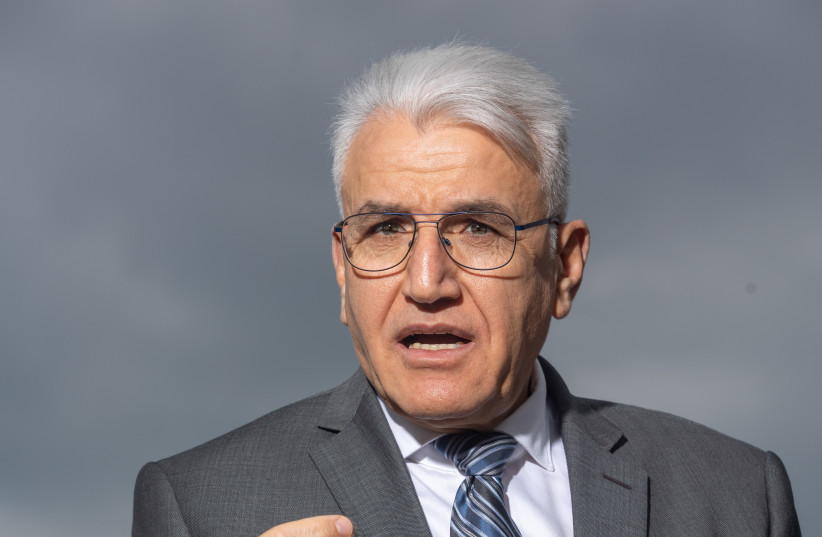In 2020, the entire world was bulldozed by COVID-19. People were asked to isolate at home. Schools were shut down. Employees moved to remote work or were put on leaves of absence.
Three and a half years later, the virus has subsided but the world is left with the impact of COVID-19 – economic, physical and mental. Today, more and more people are literally starving to take back control of the lives they lost to the pandemic.
“People experienced a lot of stress around the unknown of this new virus,” explained Prof. Salman Zarka, director-general of Ziv Medical Center and former coronavirus coordinator for the Health Ministry. “They worried about themselves and their loved ones.
“On one hand, the closures caused people to disconnect from their friends and family, their schools, work and routine way of life,” he continued. “On the other hand, spouses, parents and children spent more time together than they were used to, and this caused another level of stress.”
It also allowed parents to recognize challenges with their children they may not have been as attuned to before.
He said that society worldwide is in a state of post-traumatic stress disorder. People who did not have mental health disorders do now, and people who already struggled remain off balance and need help.
For teens, in many cases, this lack of balance has resulted in eating disorders: anorexia – severe restriction of food intake; bulimia – overeating, followed by self-induced purging; or binge eating – consuming large amounts of food and feeling unable to stop eating.
Before COVID-19, the prevalence of eating disorders among adolescents in Israel was higher than in other countries, according to peer-reviewed research by Western Galilee College.
According to the study, Israel ranked second among 33 Western countries, with over 20% of Israeli girls engaged in dieting behavior.
However, getting exact numbers is “impossible,” said Dr. Esti Galili-Weisstub, director of the Herman Dana Division of Child and Adolescent Psychiatry at Hadassah. “We can just say that it’s very, very prevalent – more than we would like it to be.”
During an interview with this reporter for the Hadassah on Call: New Frontiers in Medicine podcast, she said that as much as 10% of Israeli adolescents could struggle with an eating disorder, mainly girls.
“It’s not difficult to hide an eating disorder. It can go under the radar,” Galili-Weisstub said. “Only when it’s extreme does it come to medical attention. So the numbers in the medical sphere, which are, I would say, hard evidence numbers, are very low, and they don’t reflect the reality.”
She said there had been an unexpected spike since the start of the pandemic.
At Hadassah, “We have never had to deal with numbers that we are dealing with now. I would say it doubled.” She noted that a survey by Maccabi Health Services showed a rise of about 60% in eating disorders, but “I would say it’s much more than that; but again, we don’t have the hard numbers. We have just clinical impressions.”
The challenge is that while an eating disorder may come on quickly, it is hard to cure. According to Galili-Weisstub, only around 40% of adult anorexics will recover, and the other 60% will develop a chronic disease.
“It’s quite horrific to live as an anorexic,” Galili-Weisstub said.
Moreover, eating disorders are the most deadly of any psychiatric disorder. Up to 20% of all eating disorder cases result in death, according to the Center for Discovery, an eating disorder treatment center in the United States. In addition, the center reported that eating disorders could increase the odds of suicide by up to 32 times, and that one in five eating disorder deaths is a result of suicide.
For young people, anorexia affects the building of bones, so individuals can have shorter stature. It can also affect the reproductive system, so young girls can later have difficulty getting pregnant or experience miscarriages, said Galili-Weisstub.
Who develops an eating disorder?
While no one type of person develops an eating disorder, according to Efrat Dreizner, coordinator of social work for the Department of Psychiatry at Hadassah, typical patients tend to be women or girls with type-A personalities – that is, perfectionists, successful, driven – who are generally engaged in Western society.
“Most of the women we treat are very successful,” Dreizner said. “These are very driven women who do things in the best ways. Usually, the students are the most excellent at school… Most of them look very nice. It makes you wonder: How can these women look in the mirror and not see what we all see?”
But the reality is that eating disorders have much less to do with appearance and more with control. Dreizner said eating disorders are a way to regulate the person’s feelings, “so we don’t want to judge them for choosing this kind of coping mechanism.”
In addition, as more research is being done, it is starting to become clear that genetics plays a part, as do social pressure and ideals, family dynamics, a potential history of abuse, and sometimes other mental illnesses, said Galili-Weisstub.
She and others are engaged in studies to link biology to the causes of eating disorders. There is also new research on the role of social media in regard to eating disorders.
Specifically, in the post-COVID era, there could be a link between contracting the physical disease and the development of mental health issues, Zarka said. He added that doctors are just beginning to understand the neurological impact of the virus, which could be part of the cause of the increase not only in eating disorders post-COVID but also depression and anxiety in general.
Increase among the ultra-Orthodox
According to Prof. Rael Strous, medical director of Mayanei Hayeshua’s Mental Health Wing, there has been a notable spike in eating disorders post-COVID among the ultra-Orthodox Jewish community. The hospital, located in Bnei Brak, caters predominantly to the religious communities in central Israel. Strous said that eating disorders are “not only as common but maybe even more common among religious than secular girls.”
The hospital can treat more than two dozen patients at a time in in-patient and daycare capacity, carefully interweaving spirituality and religion into their treatment programs.
He said it is unclear why eating disorders would be so prevalent in the haredi community, but he believes the growth is twofold. On the one hand, there is increased awareness and acceptance of the disorder, so families are more willing to send their adolescents to get help.
On the other hand, a feeling of not having control of one’s life could be more common in an Orthodox community where children are expected to follow predefined paths, may be subject to arranged marriages, and then have to raise many children on lower salaries.
“It is not so much that they want to be thin, but they see this as something they can control – they can control their own bodies,” Strous said.
Eating disorders are very costly to treat and manage, he added.
“It takes a big team and a long time,” according to Strous, who said the hospital employs psychiatrists, pediatricians, dietitians, social workers, occupational and art and music therapists to help cure its patients.
Unfortunately, according to Zarka, there are insufficient treatment options in Israel, especially in the periphery. In 2017, treatment for mental health moved from hospitals to health funds, but in some areas of the country the network of providers is not large enough to meet the need.
Since COVID-19, Ziv has had 17 patients with eating disorders in its unit at one time and has had as many as 20 on waiting lists with few options for help. With support from the Health Ministry, the medical center will launch a 10-bed unit within the next two months. However, Zarka said it would be packed immediately.
Moreover, “the problem is not just beds, but staff,” Zarka said. He stated that a community response, including through community centers, schools, etc., is required fast.
“We need a rehabilitation plan for post-COVID,” Zarka said. “COVID is technically behind us, but the results of the virus are here to stay.” ■

